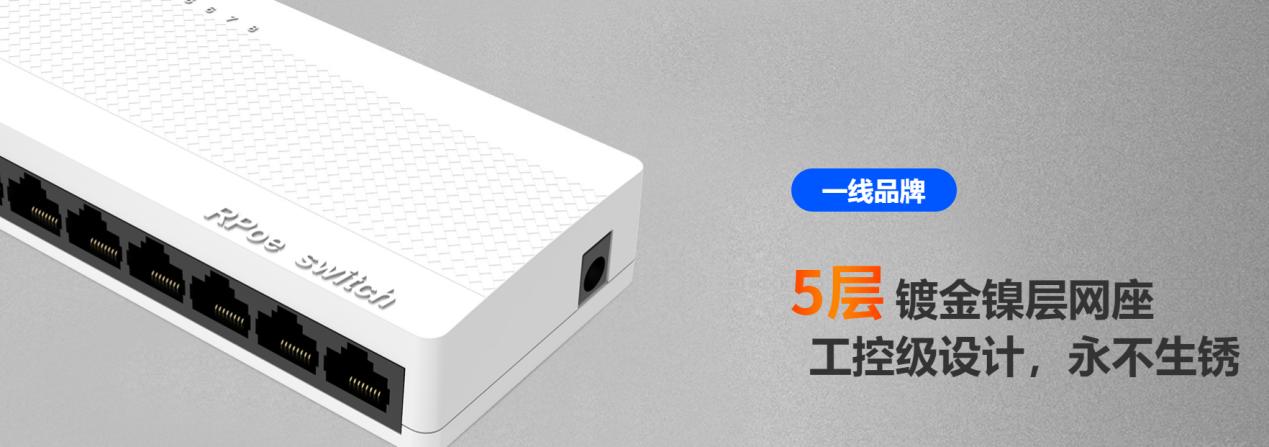Gigabit switch: A Gigabit switch is a switch with ports that can support 1000Mbps or 10/100/1000Mbps rates. Gigabit switches are flexible in networking, providing full gigabit access and enhanced 10GE uplink port expansion capabilities. In addition, Gigabit switches enable intra-rack, inter-rack, and cross-area stacking with ultra-long distances and high performance, helping data centers and enterprises quickly build scalable and easily managed data center network platforms.
10 Gigabit switch: The 10-Gigabit switch is a new generation of intelligent routing switches designed to meet the requirements of high performance and high reliability. It is mainly targeted at the enterprise network, carrier network aggregation or access layer, and can help users build cost-effective and high reliability optimized networks. 10 Gigabit Ethernet switch is not only in the existing gigabit Ethernet switch to support 10 Gigabit optical module, it from the switch architecture, 2/3 layer technology updates and effective bandwidth management have made a huge change. In addition, the emergence of ten gigabit switches to a certain extent has also promoted the development of coaxial cable, twisted pair, optical fiber and network functions from shared Ethernet to full duplex, switching Ethernet progress, transmission rate from 1000MB to 10GB or even 100GB improvement, greatly meeting the needs of the majority of users for various applications.
The difference between Gigabit switch and Gigabit switch:
1, the supported rates are different: Gigabit switches support a maximum of 1000Mbps, and 10-gigabit switches support a maximum of 100G, so the transmission rate of 10-gigabit switches is faster than that of gigabit switches.
2. The backplane bandwidth and packet forwarding rate are different: the backplane bandwidth and packet forwarding rate of the 10-gigabit switch are higher than that of the Gigabit switch, so they are more capable of large-scale networking requirements. 10-gigabit switches are generally used in the core layer network.
3, different power consumption: the power consumption of 10 gigabit switches is greater than the power consumption of gigabit switches, so in terms of energy saving, gigabit switches are more excellent.
4, different functions: Gigabit switches generally have two layers, ten gigabit switches generally have two or three layers, so ten gigabit switches will be simple, flexible and three layers of stability, scalability and high performance organic integration. As an upgraded version of a Gigabit switch, 10-Gigabit switch has more complete functions than a Gigabit switch.
5, different application scenarios: Gigabit switches are used in the access layer of local area networks and networks, such as a large number of small enterprises to access the Internet, a wide range of multimedia applications, large file transmission and other operations, these require the network to have strong data processing capabilities and efficiency, the use of gigabit switches can be competent. The ten gigabit switch is used in the metropolitan area network and the aggregation layer of the network, for example, the ten gigabit switch has a higher data forwarding capability, improve the bottleneck problem of the gigabit network, and is often used in large enterprise networks, data centers or networks with very high security performance requirements.
The above is Shenzhen HDV photoelectron Technology Ltd. to bring you the introduction of the difference between Gigabit switch and Ten Gigabit switch, I hope that through our article can make your knowledge of Gigabit switch and ten gigabit switch more clear, the above series of switch products also belong to our company's hot products, welcome to your arrival.






